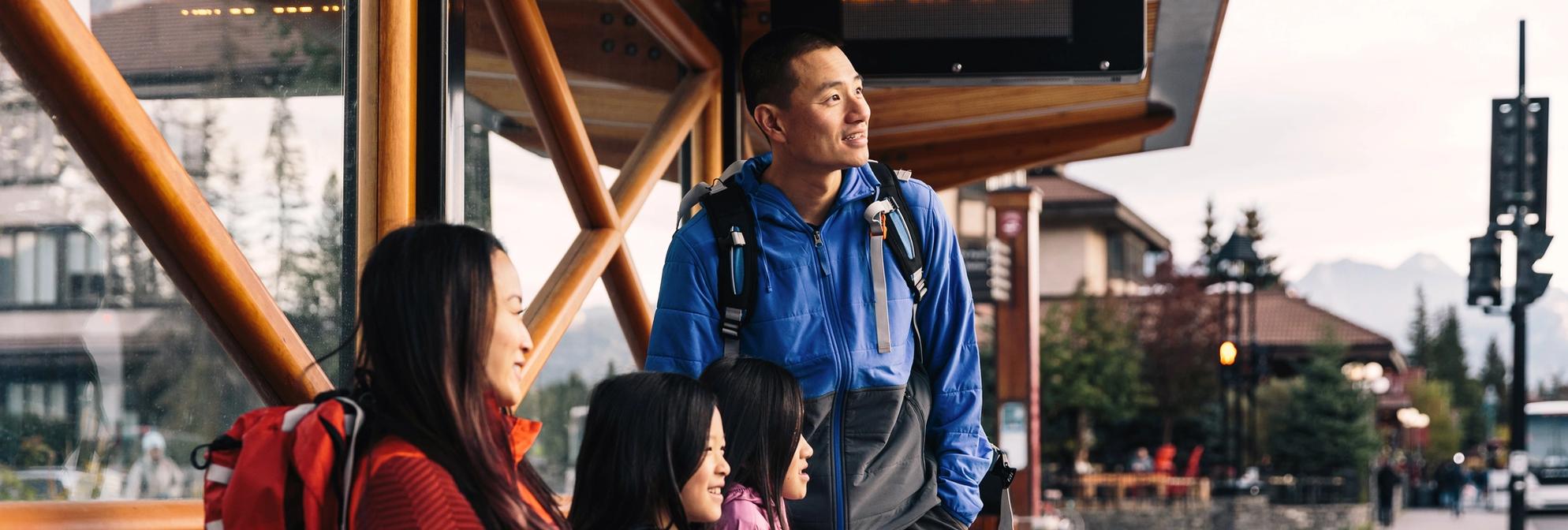
Partners on the Path: How Banff National Park is Moving Visitors Differently
Banff National Park is popular in the summer. And with that comes challenges like traffic congestion. It may surprise some to learn that even a place as wild as Banff can experience busy roads. But with limited commercial development inside the park and its close proximity to Calgary and an international airport, this is the complexity the destination is facing.
To tackle this, Banff & Lake Louise Tourism, Parks Canada, and the Town of Banff partner on Transportation Shift, an innovative campaign with the goal to change behaviour and reduce traffic. It encourages visitors to leave their car behind and explore the park through more sustainable ways like public transit, shuttles, guided tours, cycling, and walking.
While international visitors often arrive prepared to go car-free, spontaneous day-trippers from Calgary and beyond present a unique challenge. The campaign meets this head-on with messaging and a number of marketing tactics like influencer partnerships, radio ads, and signage within the park and in Calgary. A standout element of the campaign is the clever creative “Shift into Park Mode.” This call-to-action invites visitors to not only park their cars but also shift their mindset when experiencing this place.
How does the campaign relate to Lead Tourism for Good and the Trails to Tomorrow?
This initiative is more than a traffic solution. It’s strategic and aligned with the collective vision to Lead Tourism for Good in Banff and Lake Louise. Here’s how it relates to the Trails to Tomorrow:
Visitor Experience Trail
Visitors have shared frustration with traffic congestion in Banff National Park. The Transportation Shift campaign addresses this by promoting car-free travel as the key to a more enjoyable experience. By planning ahead and using transit, visitors can spend less time in traffic and more time immersed in the moments of awe in the park.
To make planning easier, the campaign provides practical tools to help visitors go car-free and have a good experience. The campaign’s landing page includes trip-planning resources, links to Banff & Lake Louise Tourism’s Visitor Services team, and information on getting to the park’s most iconic spots like Lake Louise and Moraine Lake without a car.
Nature Positive and Climate Action Trail
The campaign contributes towards a greener future by encouraging sustainable and multi-modal travel options. Reducing the number of personal vehicles in the park helps cut greenhouse gas emissions, easing the environmental footprint of tourism and protecting the park’s ecosystem.
Community Wellbeing Trail
Traffic congestion doesn’t just affect visitors—it can impact the people who live and work in Banff National Park. By reducing vehicle volume, the campaign contributes to a better environment for residents.
Smart Tourism Trail
Now in its seventh year, the partners behind Transportation Shift rely on data for decision-making. Using visitor feedback, transit usage stats, traffic counter numbers, and more to shape messaging and marketing tactics. This ensures the campaign remains responsive, effective, and aligned with evolving visitors’ needs.
An encourging fact: Roam Transit ridership is up 69% since 2022.
Transportation Shift stands as a model for how collaboration across a destination can lead to innovative solutions that support the visitor experience and contribute to protecting the natural landscape.
Learn more about the campaign on the Destination Think podcast.
Listen to the Podcast